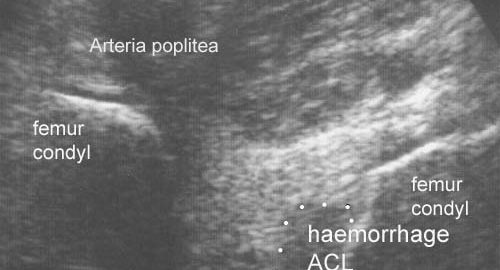|
Anterior cruciate ligament injuries in the skeletally immature patient.
Lo IK, Bell DM, Fowler PJ. Instr Course Lect 1998;47:351-9
Anterior cruciate ligament injury in the skeletally immature is becoming increasingly recognized and reported. History taking and physical examination based on the principles of ACL injuries in adults, with adjuncts such as arthroscopy and MRI, are effective in diagnosing ACL injury in the young patient. Evaluation of the young patient’s true level of skeletal immaturity by comparison with family growth history, examination for signs of sexual maturity, and radiographic evaluation is critical. The risk of physeal damage with surgical treatment is related to the immaturity of the distal femoral and proximal tibial physes. The functional results of nonsurgical treatment of ACL injury, either as an attempt at definitive treatment or as a temporizing plan until skeletal maturity occurs, are poor and the risks of reinjury and further meniscal and cartilage damage are significant. Surgical treatment for primary repair or extra-articular reconstruction alone has not proven to be efficacious. In the adolescent patient who is approaching skeletal maturity, risk of physeal injury is low and intra-articular reconstruction can be performed as in the adult patient. Results with respect to decreased laxity and return to athletic activities mirror those described in adults. In patients with significant growth remaining, however, surgical treatment carries much higher risks of physeal damage and subsequent deformity. Yet, as noted above, intra-articular reconstruction in truly skeletally immature patients using a soft-tissue graft through a transphyseal tibial tunnel of moderate or small diameter and the over-the-top position on the femur has not been shown to cause early physeal closure, limb-length discrepancy, or angular deformity. In humans, the maximum diameter of graft tunnel that will not cause physeal closure has not been determined Animal studies have shown that the tibial physis can be very sensitive to drilling. Therefore it is wise to use moderate tunnel diameters. Bone-patellar tendon-bone grafts have been used with success in patients closer to skeletal maturity. Their use has not been reported in the very skeletally immature knee and cannot be recommended because of the presumed high risk of physeal closure with a bone plug traversing the physis. It is hoped that improved understanding of the ACL injury in the skeletally immature patient will provide treatment options that will restore enduring knee function and prevent early arthrosis.
|


